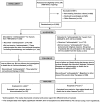Reduction of death rate due to acute myocardial infarction in subjects with cancers through systemic restoration of impaired nitric oxide
- PMID: 24558405
- PMCID: PMC3928291
- DOI: 10.1371/journal.pone.0088639
Reduction of death rate due to acute myocardial infarction in subjects with cancers through systemic restoration of impaired nitric oxide
Abstract
Introduction: Excessive aggregation of platelets at the site of plaque rupture on the coronary artery led to the formation of thrombus which is reported to precipitate acute myocardial infarction (AMI). Nitric oxide (NO) has been reported to inhibit platelet aggregation and induce thrombolysis through the in situ formation of plasmin. As the plasma NO level in AMI patients from two different ethnic groups was reduced to 0 µM (median) compared to 4.0 µM (median) in normal controls, the effect of restoration of the NO level to normal ranges on the rate of death due to AMI was determined.
Methods and results: The restoration of plasma NO level was achieved by a sticking small cotton pad (10×25 mm) containing 0.28 mmol sodium nitroprusside (SNP) in 0.9% NaCl to the abdominal skin of the participants using non-toxic adhesive tape which was reported to normalize the plasma NO level. The participants (8,283) were volunteers in an independent study who had different kinds of cancers and did not wish to use any conventional therapy for their condition but opted to receive SNP "pad" for their condition for 3 years. The use of SNP "pad" which normalized (≈4.0 µM) the plasma NO level that in consequence reduced the death rate due to AMI, among the participants, was found to be significantly reduced compared to the death due to AMI in normal population.
Conclusion: Our data suggested that the use of SNP "pad" significantly reduced the death due to AMI.
Trial registration: www.ctri.nic.in CTRI/2013/12/004236.
Conflict of interest statement
Figures




Similar articles
-
Platelet cyclic GMP levels in unstable angina and myocardial infarction.Platelets. 2002 Aug-Sep;13(5-6):307-11. doi: 10.1080/0953770021000007212. Platelets. 2002. PMID: 12189017
-
Nitric oxide production by neutrophils obtained from patients during acute coronary syndromes: expression of the nitric oxide synthase isoforms.J Am Coll Cardiol. 2002 Mar 6;39(5):818-25. doi: 10.1016/s0735-1097(01)01828-9. J Am Coll Cardiol. 2002. PMID: 11869847
-
Isolation and study of insulin activated nitric oxide synthase inhibitory protein in acute myocardial infarction subjects.J Thromb Thrombolysis. 2012 Apr;33(3):218-29. doi: 10.1007/s11239-011-0672-8. J Thromb Thrombolysis. 2012. PMID: 22238031
-
The appearance of dermcidin isoform 2, a novel platelet aggregating agent in the circulation in acute myocardial infarction that inhibits insulin synthesis and the restoration by acetyl salicylic acid of its effects.J Thromb Thrombolysis. 2011 Jan;31(1):13-21. doi: 10.1007/s11239-010-0515-z. J Thromb Thrombolysis. 2011. PMID: 20809104
-
The role of magnesium as antithrombotic therapy.Wien Med Wochenschr. 2000;150(15-16):343-7. Wien Med Wochenschr. 2000. PMID: 11105330 Review.
Cited by
-
Cardiovascular Disease as a Consequence or a Cause of Cancer: Potential Role of Extracellular Vesicles.Biomolecules. 2023 Feb 8;13(2):321. doi: 10.3390/biom13020321. Biomolecules. 2023. PMID: 36830690 Free PMC article. Review.
-
Clinical application of nitric oxide in ischemia and reperfusion injury: A literature review.Brain Circ. 2020 Dec 29;6(4):248-253. doi: 10.4103/bc.bc_69_20. eCollection 2020 Oct-Dec. Brain Circ. 2020. PMID: 33506147 Free PMC article. Review.
-
Dermcidin isoform-2 induced nullification of the effect of acetyl salicylic acid in platelet aggregation in acute myocardial infarction.Sci Rep. 2014 Jul 24;4:5804. doi: 10.1038/srep05804. Sci Rep. 2014. PMID: 25055737 Free PMC article.
-
Nitric Oxide in Cardiac Surgery: A Review Article.Biomedicines. 2023 Apr 3;11(4):1085. doi: 10.3390/biomedicines11041085. Biomedicines. 2023. PMID: 37189703 Free PMC article. Review.
-
Day/Night and Summer/Winter Changes in Serum Total Antioxidant Capacity.Med Chem. 2018;14(3):225-229. doi: 10.2174/1573406413666171002123158. Med Chem. 2018. PMID: 28969574 Free PMC article.
References
-
- Furman MI, Benoit SE, Barnard MR, Valeri CR, Borbone ML, et al. (1998) Increased platelet reactivity and circulating monocyte-platelet aggregates in patients with stable coronary artery disease. J Am Coll Cardiol 1: 352–358. - PubMed
-
- Mills DC (1996) ADP receptors on platelets. Thromb Haemost 76(6): 835–56. - PubMed
-
- Fuster V, Badimon J, Chesebro JH, Fallon JT (1996) Plaque rupture, Thrombosis, and therapeutic implications. Haemostasis 26: 269–284. - PubMed
-
- Arneson H, Hoiseth A, Ly B (1982) Streptokinase or heparin in the treatment of deep vein thrombosis: follow-up results of a prospective study. Acta Med Scand 211: 65. - PubMed
-
- Belkin M, Belkin B, Bucknam CA, Straub JJ, Lowe R (1986) Intra-arterial fibrolytic therapy: Efficacy of streptokinase vs urokinase. Arch Surg 121(7): 769–73. - PubMed
Publication types
MeSH terms
Substances
LinkOut - more resources
Full Text Sources
Other Literature Sources
Medical
Research Materials

